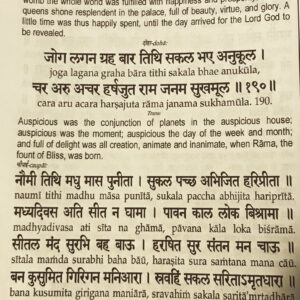 In February of 2019 I began to wake up. I cannot explain it, except for the grace of God. I wasn’t looking for anything, and didn’t expect to find anything, let alone the sort of transformation that has ensued in the four years since.
In February of 2019 I began to wake up. I cannot explain it, except for the grace of God. I wasn’t looking for anything, and didn’t expect to find anything, let alone the sort of transformation that has ensued in the four years since.
I found my way, almost by accident, to a daily meditation practice on April 5th of that year. Once that practice was established, I spent a great deal of time researching the subject, learning about the techniques and philosophies of various lineages, experimenting with my own practice, reading, studying, listening and growing.
One of the guru lineages that resonated most deeply with me was that of Paramahansa Yogananda. I began serious study of the Self-Realization Fellowship lessons in the Autumn of 2020. By the time I completed their series of lessons in the Summer of 2021, I was still not entirely sure if the Kriya Yoga path was the one for me. I had a good understanding of the philosophy and techniques of SRF, but practicing within their framework seemed overly dogmatic and prescriptive. I continued to practice and study, but was not ready to commit my remaining years to their discipline.
I happened across Ryan Kurczak’s Kriya Yoga Online YouTube Channel, and began to learn informally from him, eventually reading some of his books and joining his Patreon Community. I briefly considered applying for his Kriya Yoga Apprenticeship last year, but decided that I was not quite yet prepared for the anticipated rigor.
In Mid-December of 2022, insight came. I realized that at this point in my life Kriya Yoga is my path, and Ryan is my teacher. Once this realization occurred, everything else surrounding my spiritual life became clear. I had been holding on to some things out of habit or sentimentality that weren’t serving me anymore. These fell away almost immediately, and I now feel a great sense of peace and order.
You can learn more about this Kriya Yoga lineage at Kriya Yoga Online. I would also highly recommend Ryan’s Kriya Yoga Meditation Beginner’s Guide playlist on YouTube.

 The Ongoing Presence of Neem Karoli Baba
The Ongoing Presence of Neem Karoli Baba Plant based meats have come a long way over the past few years, from the mushy crumbles of yore to something that truly approximates the texture and flavor of beef.
Plant based meats have come a long way over the past few years, from the mushy crumbles of yore to something that truly approximates the texture and flavor of beef.
 Recently I completed a course of study on
Recently I completed a course of study on  What Is Japa?
What Is Japa? Nearly every morning I still tune in to
Nearly every morning I still tune in to  Goswami Tulsidas was an Indian saint and poet who lived in the 16th Century CE. His Ramcharitmanas (the Holy-Lake of the enactments of Lord God Rama) is a retelling of the Ramayana in Awadhi. Through this, which would become one of the great works of world literature, he brought the story from Sanskrit into the vernacular of the people for the very first time.
Goswami Tulsidas was an Indian saint and poet who lived in the 16th Century CE. His Ramcharitmanas (the Holy-Lake of the enactments of Lord God Rama) is a retelling of the Ramayana in Awadhi. Through this, which would become one of the great works of world literature, he brought the story from Sanskrit into the vernacular of the people for the very first time. I’ve been wanting to try cooking Pad Thai for a long time, and finally got around to it last week. I had already researched recipes, but when I told my wife I was planning to make it, she scared up one more that was helpful in pulling together the dish.
I’ve been wanting to try cooking Pad Thai for a long time, and finally got around to it last week. I had already researched recipes, but when I told my wife I was planning to make it, she scared up one more that was helpful in pulling together the dish.